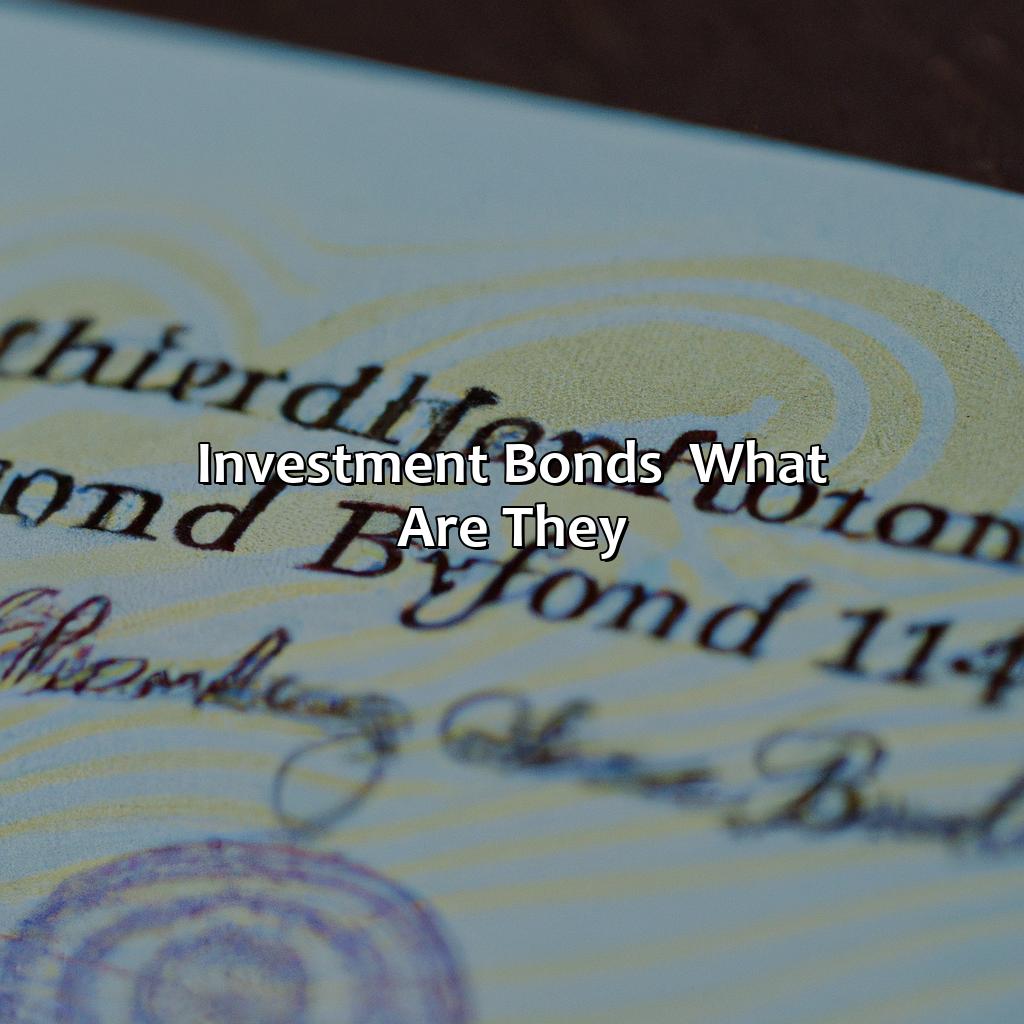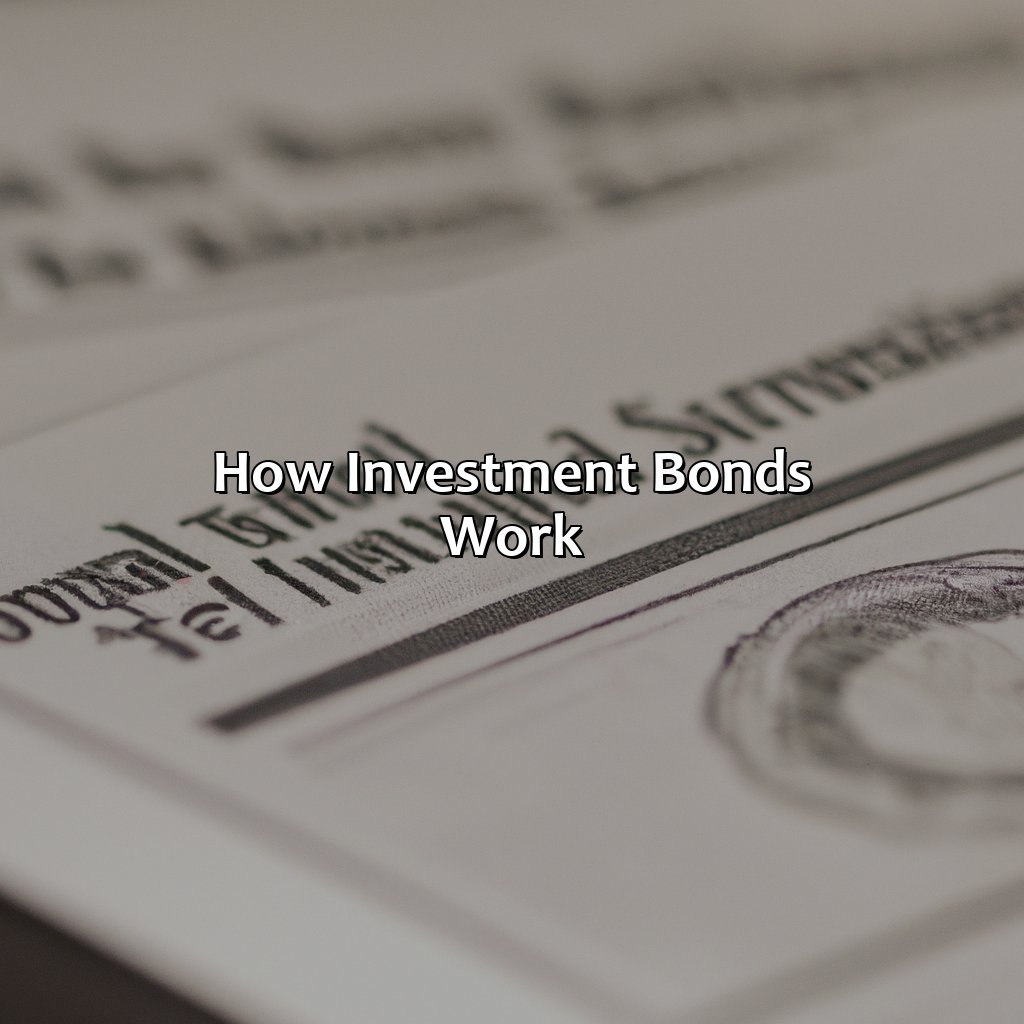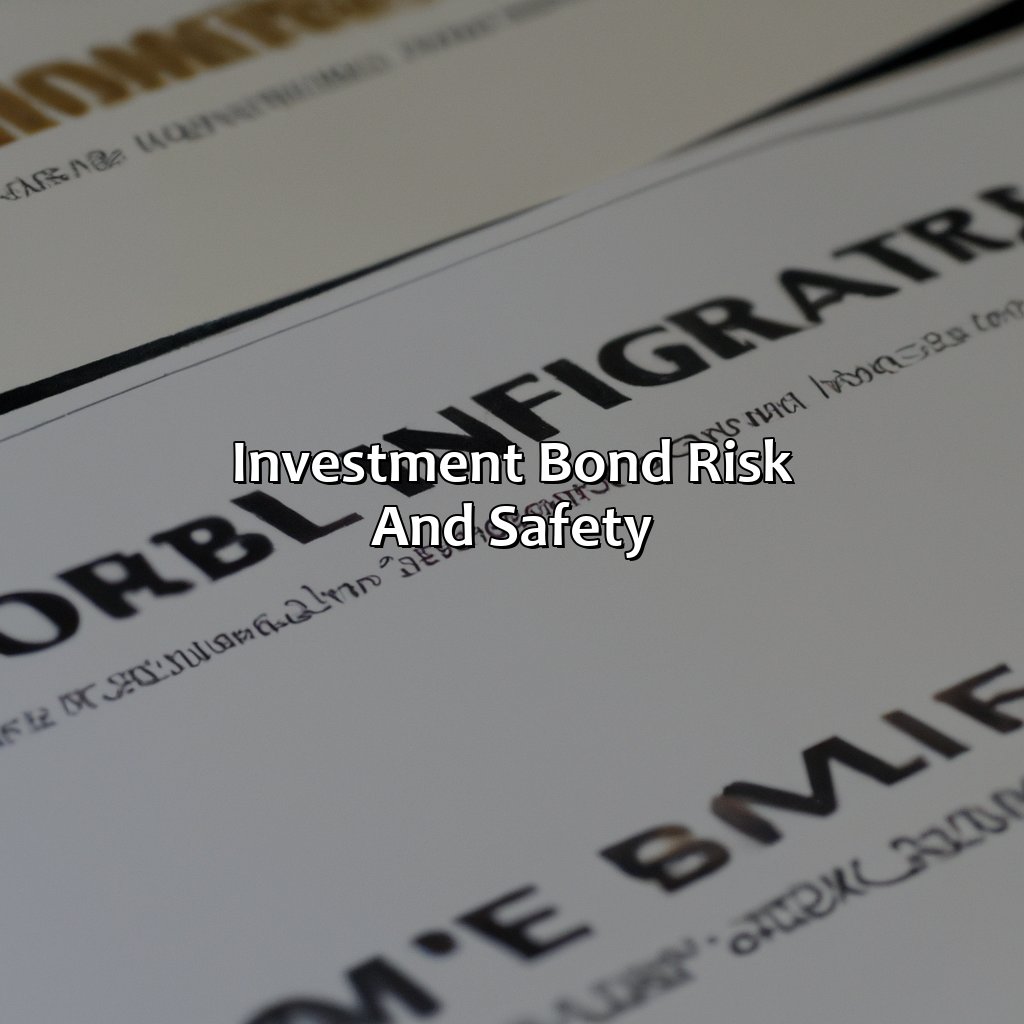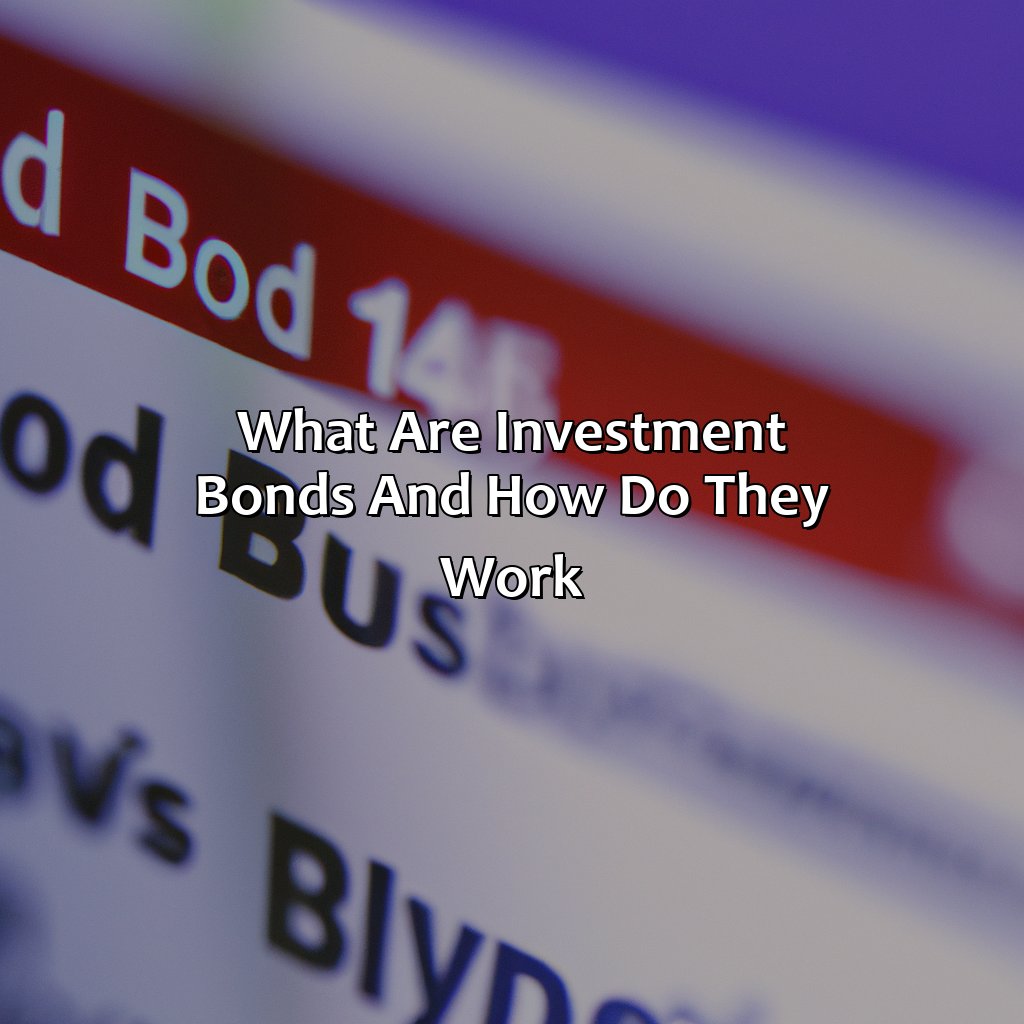What Are Investment Bonds And How Do They Work?
Key Takeaways:
- Investment bonds are a type of debt security where investors loan money to companies or governments in exchange for interest payments over a specified period of time.
- Investment bonds have different types including government bonds, corporate bonds, and municipal bonds. These bonds have varying levels of risks and potential rewards based on their issuer and credit ratings.
- Investment bonds provide investors with a steady stream of income and can be bought and sold on the bond market. However, like all investments, investment bonds carry risk and can fluctuate in price due to changes in interest rates, credit rating downgrades, and other market factors.
Struggling to understand investments? You’re not alone. Investment bonds are a great way to grow your money but the process can be confusing. Learn how to make the most of your investment opportunity and secure your financial future.
Investment Bonds – What are they?
Investment bonds – what are they? Let’s break it down.
Definition and Types of Investment Bonds: This’ll give you the basics.
Advantages and Disadvantages of Investment Bonds: Here’s the pros and cons.
Understand investment bonds better, with these two sub-sections!

Image credits: retiregenz.com by Harry Arnold
Definition and Types of Investment Bonds
Investment bonds represent a type of investment scheme where the money is lent to a company or government for a fixed period, earning interest. Various types of investment bonds are available with different terms and conditions, making them an excellent way of investing money if chosen wisely.
The following table shows the different types of investment bonds and their characteristics:
| Type | Description |
| Corporate Bonds | Bonds issued by companies to raise funds for different purposes. |
| Government Bonds | Bonds issued by governments to manage national debt. |
| Municipal Bonds | Bonds issued by states or local municipalities for public infrastructure projects. |
Investment bonds can also be categorized based on their risk profiles, such as high yield, low-risk government bonds or more volatile corporate bonds. Investors seeking financial security may prefer low-risk options.
Investment bonds’ values can fluctuate during their lifetime based on various factors that affect bond prices. However, their fixed returns make them a reliable choice for those who prioritize steady income.
It is interesting to note that some investment bonds pay out interest twice per year instead of annually. For example, some government-issued savings bonds provide this option.
According to Forbes’ recent analysis in June2021, “Sales of US long-term mutual funds and Exchange Traded Funds reached $528 billion in May2021”.
Is investing in bonds risky? It’s like walking on eggshells, but at least you’ll have something to cushion the fall.
Advantages and Disadvantages of Investment Bonds
Investment bonds offer a plethora of benefits and drawbacks. Here’s what you need to know about them before investing.
- One of the significant advantages of investment bonds is that they provide tax benefits, allowing investors to defer paying taxes until withdrawals are made.
- Investment bonds also offer a predictable stream of income, which can benefit those planning for their retirement.
- However, investment bonds come with high fees and charges associated with setting up and maintaining these accounts.
- Moreover, investment bond returns may be impacted by market fluctuations, making them somewhat risky.
It’s worth noting that some investment bonds allow partial withdrawals without penalty or surrender charges after a certain period. This feature could make them more flexible for investors who desire liquidity while still taking advantage of tax-deferred growth opportunities.
Pro Tip: Always consider your financial objectives before investing in investment bonds as it’s essential to have a clear understanding of the risks and rewards involved.
Put your money in an investment bond and watch it grow, just like your ex’s resentment towards you.
How Investment Bonds Work
Gaining insight into how investment bonds work? No problem! Let’s learn how to buy and sell them. We’ll also explore the yield and return they offer. With this info, you can make smarter decisions. Benefits of buying and selling bonds? Let’s find out! To top it off, you’ll gain more knowledge of the yield and return of these bonds. Now you’re ready to invest!

Image credits: retiregenz.com by David Washington
How to Buy and Sell Investment Bonds
Investment bonds can be bought and sold in various ways, and it is essential to understand the process. Here’s a guide on how you can purchase and sell investment bonds effectively.
- Research the investment bond market by analyzing its past performance and current trends.
- Choose an investment bond that suits your financial goals, risk tolerance, and budget.
- Work with a financial advisor or brokerage firm that could provide guidance on purchasing and selling investment bonds effectively.
It is vital to note that buying and selling investment bonds have tax implications, so seek professional advice before proceeding.
Investment opportunities vary based on financial stability, inflation rates, political stability, among other factors. Therefore, always stay informed when making any investments decisions.
Don’t miss out on potential wealth creation through investment bonds. Seek financial advice today and start investing in reliable investments to reach your financial desires!
“Yield on investment bonds is like a good haircut – it may not seem like much, but over time it can really add up.”
Yield and Return on Investment Bonds
Investment Bonds’ Income and Investment Returns are crucial aspects. Outcomes largely depend on specific terms and conditions. Let’s look at the table below, which shows various Investment Bonds with their respective Yield and Return on Investment under certain scenarios.
| Investment Bond | Yield | Return on Investment |
|---|---|---|
| Corporate Bonds | 5% | 4% |
| Municipal Bonds | 3.5% | Exempt from Federal Taxes |
| U.S. Treasury Bonds | 1% | Exempt from State & Local Taxes |
In addition to Yield and ROI, maturity dates and interest rates should be considered when investing in bonds. Be sure to research your options carefully beforehand.
One crucial aspect of Investing in Bonds that can’t be emphasized enough is doing your research before diving in headfirst. Keep in mind that many variables can affect how investments play out, as illustrated by the success story of a woman who purchased corporate bonds with interest rates fluctuating between 2-3%, resulting in an impressive return on her investment over time.
Remember, investing in bonds is like having a blind date- there’s always a risk, but if it goes well, you’ll have a steady and safe long-term relationship.
Investment Bond Risk and Safety
Learn how to protect your investment bonds from risk. Investigate the “Investment Bond Risk and Safety” section. It covers Rating Agencies, Credit Ratings, Bond Market Fluctuations, and Price Risk. Discover strategies that guarantee the safety of your investment. Get a better understanding of the rating agencies, credit rating and bond market volatility.

Image credits: retiregenz.com by Yuval Arnold
Rating Agencies and Credit Ratings
Credit rating agencies play a crucial role in assessing the safety of investment bonds. These agencies analyze various factors such as default risk, financial stability, and macroeconomic forecasting to assign credit ratings to these bonds. The credit rating indicates the level of risk involved in investing in a particular bond.
It is essential for investors to understand the significance of credit ratings as they provide insight into the potential returns and risks associated with investing in investment bonds. These ratings range from AAA (highest safety) to D (defaulted). The higher-rated bonds imply lower risks but offer lower returns, while conversely lower-rated bonds have higher returns but greater risks.
Investors should carry out their due diligence before investing by researching and analyzing the historical performance and business specifics of the issuer. Additionally, it is vital to diversify investment portfolios by investing in different types of investment bonds that cater to varying levels of risk appetite.
When it comes to bond market fluctuations, it’s like riding a rollercoaster – except you don’t get a souvenir photo at the end.
Bond Market Fluctuations and Price Risk
Investment bonds can be risky, and ignorance about bond market fluctuations can lead to dangerous price risks. In the world of investment bonds, there are significant potential upsides as well as downsides. The fluctuation of prices in the bond market is one of them. The price bears a direct correlation with risk; when prices increase beyond the issuance price and mature, it leads to gains. On the other hand, when prices decline from the issue date and maturity, it leads to substantial losses.
To prevent such damages, investors must learn how to mitigate these risks by studying market trends regularly. A portfolio manager can reduce risks through diversification among various asset classes or seeking specific credit ratings before investment.
While modern tools provide insight and mitigate some risk factor from investments in bonds by tracking trends backed by data, unpredictability is still part of investing in bonds.
In 2016, UK Retail firm Tesco faced massive fines due to illegal practices uncovered during an investigation into their accounts department. As a result of the investigation, Tesco’s stocks plummeted 50%, but their subsidiary Tesco Bank’s bonds remained stable because they fell outside retail profits’ purview affected by this scandal highlighting that anything is possible with financial markets leading investors to take note that even what seems clear-cut isn’t always so simple.
Five Facts About Investment Bonds and How They Work:
- ✅ Investment bonds are a type of fixed-income investment that represent a loan made by an investor to a borrower, typically a government or corporation. (Source: Investopedia)
- ✅ They are designed to generate a steady stream of income for the investor in the form of interest payments, as well as a return of their principal investment at maturity. (Source: The Balance)
- ✅ Investment bonds may be issued with varying levels of credit risk, ranging from virtually risk-free government bonds to high-risk corporate bonds. (Source: Financial Times)
- ✅ Unlike stocks, investment bonds do not represent ownership in the issuing entity and do not offer the potential for capital gains. (Source: Forbes)
- ✅ Investment bonds can be bought and sold on secondary markets before their maturity date, allowing investors to exit their position early if needed. (Source: The Street)
FAQs about What Are Investment Bonds And How Do They Work?
What are investment bonds and how do they work?
Investment bonds are a type of investment product that involves investing money with a company or government in exchange for interest payments. The money you invest is technically a loan, and the interest rate is usually fixed for the life of the bond. When the bond reaches maturity, you receive your initial investment back, along with any interest earned.
Are investment bonds a safe investment?
Investment bonds are generally considered a safe investment, but there is some risk involved. The risk comes from the possibility that the issuer of the bond may not be able to pay back the loan, which can result in default. However, the risk can be minimized by investing in bonds issued by highly-rated companies or governments.
What types of investment bonds are available?
There are many different types of investment bonds available, including government bonds, municipal bonds, corporate bonds, and high-yield bonds. Government bonds are issued by national governments, while municipal bonds are issued by local governments. Corporate bonds are issued by companies, while high-yield bonds are issued by riskier companies or corporations.
Can you sell investment bonds before they reach maturity?
Yes, investment bonds can be sold before they reach maturity. The price at which you can sell the bond before maturity will depend on a number of factors, including interest rates and the creditworthiness of the issuer. If you sell the bond before maturity, you may receive more or less than your initial investment, depending on these factors.
What are the benefits of investing in bonds?
Investing in bonds can offer a number of benefits, including regular interest payments, diversification of your investment portfolio, and potentially lower risk compared to other types of investment products. Additionally, many bonds are issued with tax advantages that can help you save money on your taxes.
How can I start investing in bonds?
The easiest way to start investing in bonds is to work with a professional financial advisor who can help you determine your investment goals and risk tolerance and then recommend investment products that fit your needs. Alternatively, you can invest in bonds directly through a brokerage account or by purchasing bonds through a bank or financial institution.
